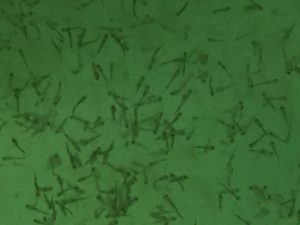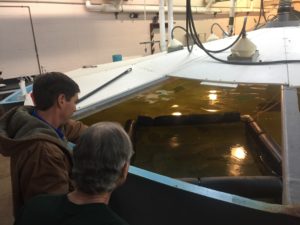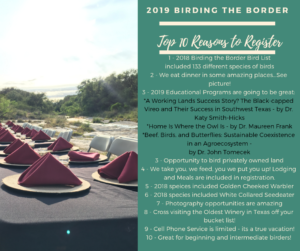Writer: Kay Ledbetter, 806-677-5608, skledbetter@ag.tamu.edu
Contact: Megan Eikner, 806-373-0713, megan.eikner@ag.tamu.edu
AMARILLO – Anyone interested in spending time outdoors and helping manage natural resources and natural areas can sign up for the next Texas A&M AgriLife Extension Service Texas Master Naturalist training class set to begin April 6.
The Texas Master Naturalist program is a collaborative effort between AgriLife Extension and the Texas Parks and Wildlife Department, said Megan Eikner, AgriLife Extension agriculture and natural resources agent for Potter County.
Enrollment fee is $95, and the first class will meet at the Southwest Amarillo Public Library, 6801 SW 45th Ave., Amarillo. For the full class schedule, go to the Panhandle Chapter website at https://txmn.org/pc/, and click on the “Join Us” tab.
The program trains citizen volunteers on the management of natural resources and natural areas in their communities, Eikner said. Class training topics include habitat, conservation, water resources and history, animals and insects.
The main qualification for a Texas Master Naturalist certification is an interest in learning about and playing an active part in conservation, she said. Volunteers will receive a minimum of 40 hours of basic training from educators and specialists from universities, natural resource agencies, nature centers and museums.
Once certified, Eikner said, volunteers must provide 40 hours of service a year in community education, demonstration and habitat enhancement projects to maintain certification. They are also expected to pursue a minimum of eight hours of advanced training in areas of personal interest.
The Panhandle Chapter encompasses 26 counties and includes a diverse assortment of locations of interest. Three of the largest are Palo Duro Canyon, Caprock Canyons State Park and the Alibates Flint Quarries National Monument.
For more information, contact Eikner at 806-373-0713 or megan.eikner@ag.tamu.edu, or Susie Wheeler at susiewhe@hotmail.com.
-30-
The post Texas Master Naturalist intern training to begin April 6 in Amarillo appeared first on AgriLife Today.
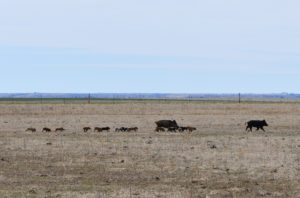
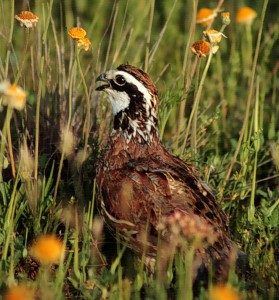
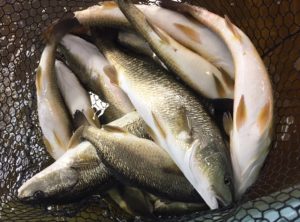






 Southern flounder are “floundering” as wild population densities decline. One of the big three sportfish in Texas, along with redfish and spotted seatrout, southern flounder are a sought after gamefish of commercial and recreational importance. Due to overharvest, accidental bycatch, water temperature rise and other factors, the flounder numbers are declining in Texas waterways. Along with Texas Parks and Wildlife, Texas A&M University’s Department of Wildlife and Fisheries’ Dr. Todd Sink and graduate research assistant Elizabeth Silvy have developed a methodology that may aid stock enhancement programs that promote the flounder fishery.
Southern flounder are “floundering” as wild population densities decline. One of the big three sportfish in Texas, along with redfish and spotted seatrout, southern flounder are a sought after gamefish of commercial and recreational importance. Due to overharvest, accidental bycatch, water temperature rise and other factors, the flounder numbers are declining in Texas waterways. Along with Texas Parks and Wildlife, Texas A&M University’s Department of Wildlife and Fisheries’ Dr. Todd Sink and graduate research assistant Elizabeth Silvy have developed a methodology that may aid stock enhancement programs that promote the flounder fishery. in the wild, and that larval flounder are temperature dependent when it comes time to form gonads. If temperatures are too high or too low, a majority of the offspring produced will be male. This has been proven true in the wild as well as in stock enhancement programs currently run by TPWD. To produce a hearty wild flounder stock, or even promote hatchery numbers, a majority of the offspring must be female, as one male can mate with a hundred females.
in the wild, and that larval flounder are temperature dependent when it comes time to form gonads. If temperatures are too high or too low, a majority of the offspring produced will be male. This has been proven true in the wild as well as in stock enhancement programs currently run by TPWD. To produce a hearty wild flounder stock, or even promote hatchery numbers, a majority of the offspring must be female, as one male can mate with a hundred females. ale are created. These female/male flounder can then be bred back to wild females collected from TPWD’s stock enhancement programs to produce all female progeny to be release in the wild.
ale are created. These female/male flounder can then be bred back to wild females collected from TPWD’s stock enhancement programs to produce all female progeny to be release in the wild. male reproductive organs in a genetically female fish. These fish will never be released into the wild; instead they will be kept as broodstock to breed with female flounder collected from the wild to maintain genetic diversity. These fish will only produce genetically and physically female flounder that have not been altered in any way. These offspring can then be released into the wild to supplement wild populations.
male reproductive organs in a genetically female fish. These fish will never be released into the wild; instead they will be kept as broodstock to breed with female flounder collected from the wild to maintain genetic diversity. These fish will only produce genetically and physically female flounder that have not been altered in any way. These offspring can then be released into the wild to supplement wild populations.